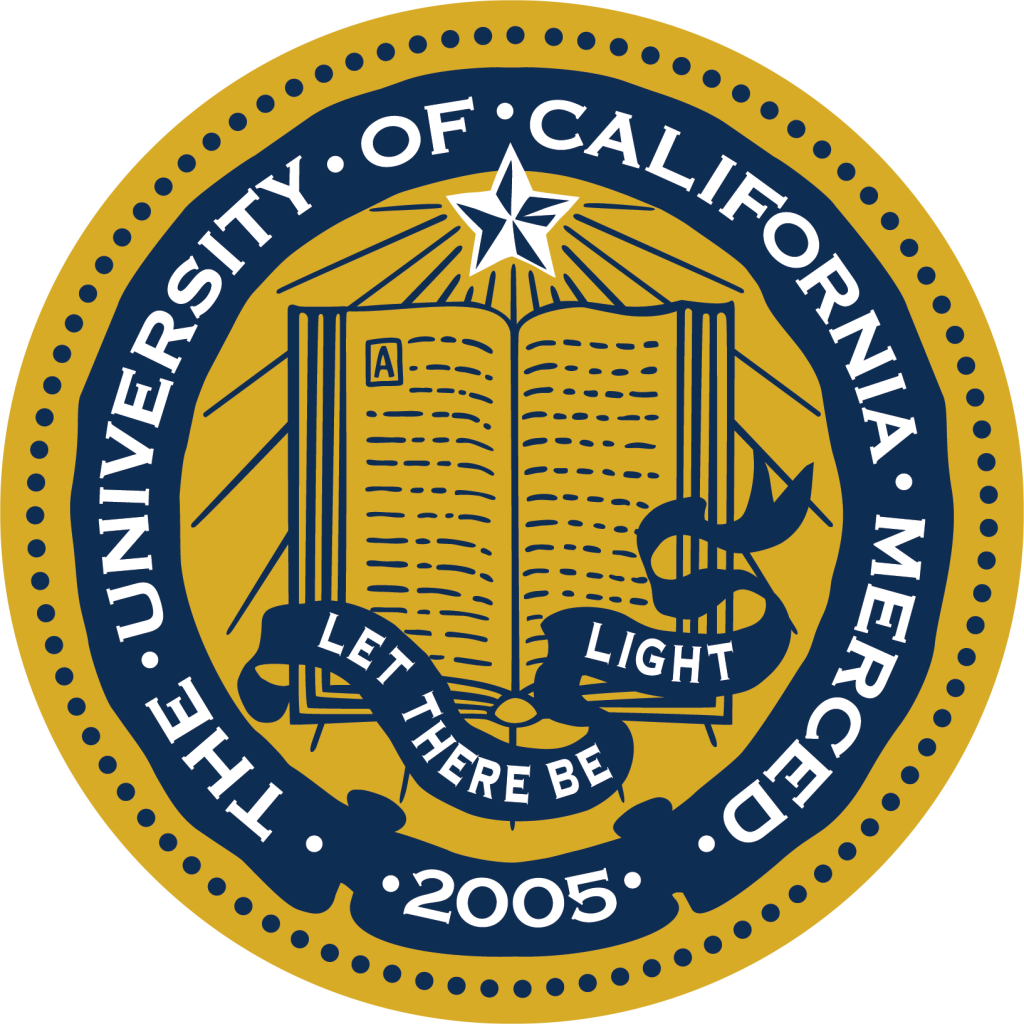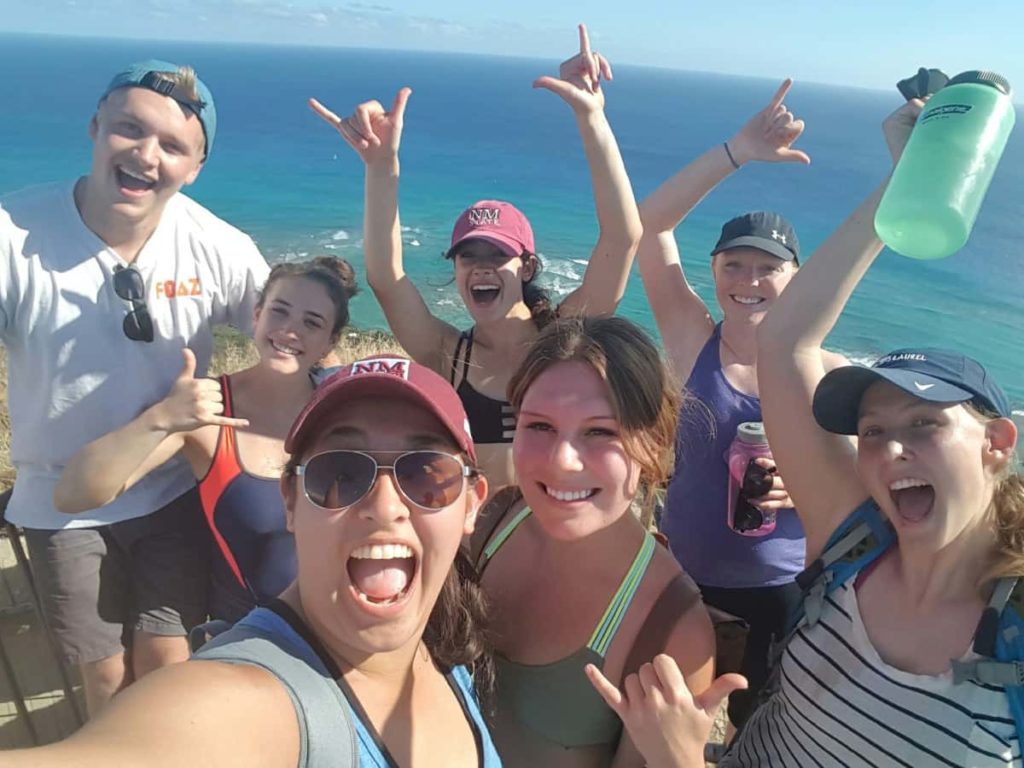Dr. Nishiguchi’s early start
with Science
 Dr. Nish got into marine biology as a young child watching “The undersea adventures of Jacques Cousteau” on television in the early 70s (she used to dive off the living room couch into the deep sea of shag carpet and swim around with the undersea critters on television). Growing up in Northern California near Monterey, she spent many summers watching divers go in and out of the kelp forest, and had an early fascination with all things marine, particularly those without backbones. During her undergraduate years at UC Davis as a premed, she took her first courses in Zoology and Invertebrate Zoology, with a quick visit out to the UC Davis Bodega Marine Station. It was during her Invert course (with Dr. Richard Grosberg, still at UCD), that she knew she found a passion in marine invertebrate zoology (and not medicine!). Dr. Nish then spent 10 weeks out at the Bodega Marine Station working on her undergradute senior thesis with Dr. Victor Chow. She combined her love of the ocean with her bachelor’s degree in biochemistry to examine the effects of temperature on the enzyme phosphoglucose isomerase (PGI) in the intertidal sea anemone Anthopleura elegantissima.
Dr. Nish got into marine biology as a young child watching “The undersea adventures of Jacques Cousteau” on television in the early 70s (she used to dive off the living room couch into the deep sea of shag carpet and swim around with the undersea critters on television). Growing up in Northern California near Monterey, she spent many summers watching divers go in and out of the kelp forest, and had an early fascination with all things marine, particularly those without backbones. During her undergraduate years at UC Davis as a premed, she took her first courses in Zoology and Invertebrate Zoology, with a quick visit out to the UC Davis Bodega Marine Station. It was during her Invert course (with Dr. Richard Grosberg, still at UCD), that she knew she found a passion in marine invertebrate zoology (and not medicine!). Dr. Nish then spent 10 weeks out at the Bodega Marine Station working on her undergradute senior thesis with Dr. Victor Chow. She combined her love of the ocean with her bachelor’s degree in biochemistry to examine the effects of temperature on the enzyme phosphoglucose isomerase (PGI) in the intertidal sea anemone Anthopleura elegantissima.
Dr. Nish then spent a few years working at the newly formed biotech company Genetech in South San Francisco, where she honed her techniques in protein biochemistry and took courses at San Francisco State University and UC Berkeley in Marine Ecology and Invertebrate Physiology. She then returned to graduate school at UC San Diego Scripps Institution of Oceanography to complete her Master’s degree in Marine Science under the mentorship of Dr. George Somero (currently at Stanford University, Hopkins Marine Station). Her continuation of combining molecular with marine science led to her MS thesis entitled “The role of dimethylsulfoniopropionate (DMSP) in protein stability and conformation”.
 Dr. Nish then moved back up to her roots in Northern California to start her PhD in the laboratory of Dr. Lynda Goff at UC Santa Cruz (one of the few universities that has an invertebrate as their mascot….Go Slugs!). Nish worked on combining her earlier work in DMSP biochemistry with symbiosis (another interest) by working on epiphytic bacteria that degrade this compound when it is released from macroalgae. Her dissertation led to the discovery of how bacteria are able to take this compound, which is an important osmolyte in certain species of marine algae, and transform it into dimethylsulfide (DMS), an important gas that is responsible for cloud cover condensation that is linked to possible effects of global cooling- counteracting greenhouse gas effects. Her Ph.D. work culminated in her thesis entitled “The role of dimethylsulfoniopropionate (DMSP) lyase in marine macroalgae of the Monterey Bay. During this time, Dr. Nish also taught sea kayaking at Monterey Bay Kayaks as one of their lead instructors, and trained/raced in triathlons and marathons….a long time goal for her. Her first marathon was the San Francisco marathon, which she completed before her defense in September, 1994.
Dr. Nish then moved back up to her roots in Northern California to start her PhD in the laboratory of Dr. Lynda Goff at UC Santa Cruz (one of the few universities that has an invertebrate as their mascot….Go Slugs!). Nish worked on combining her earlier work in DMSP biochemistry with symbiosis (another interest) by working on epiphytic bacteria that degrade this compound when it is released from macroalgae. Her dissertation led to the discovery of how bacteria are able to take this compound, which is an important osmolyte in certain species of marine algae, and transform it into dimethylsulfide (DMS), an important gas that is responsible for cloud cover condensation that is linked to possible effects of global cooling- counteracting greenhouse gas effects. Her Ph.D. work culminated in her thesis entitled “The role of dimethylsulfoniopropionate (DMSP) lyase in marine macroalgae of the Monterey Bay. During this time, Dr. Nish also taught sea kayaking at Monterey Bay Kayaks as one of their lead instructors, and trained/raced in triathlons and marathons….a long time goal for her. Her first marathon was the San Francisco marathon, which she completed before her defense in September, 1994.
 Dr. Nish was the recipient of an NSF biotechnology postdoctoral fellowship that enabled her to begin her work at the University of Southern California on the sepiolid squid-Vibrio symbiosis with Drs. Margaret McFall-Ngai and Edward Ruby (now presently at the University of Wisconsin, Madison). McFall-Ngai and Ruby are the founders of this interesting and dynamic symbiotic model system, and it was here that Dr. Nish was a co-sponsored postdoctoral research associate between the two laboratories. Dr. Nish began her work deciphering the relationship between the many species of sepiolid squids and their luminous Vibrio symbionts. She spent the next 2 years at USC, and subsequently at the University of Hawaii (where the lab moved to in 1997) investigating species specificity, competitive exclusion, and cospeciation. In 1998 she moved back to Los Angeles (UCLA) to work with Dr. Charles Marshall(now at UC Berkeley) to strengthen her skills in phylogenetics and systematic biology, by investigating the evolution of Camaradont Echinoderms using a combined approach with morphology and molecules. In 1999, she arrived to New Mexico State as an assistant professor, ready to start her own laboratory, and has since been interested in the evolution, ecology, and population dynamics of this interesting and dynamic marine symbiosis.
Dr. Nish was the recipient of an NSF biotechnology postdoctoral fellowship that enabled her to begin her work at the University of Southern California on the sepiolid squid-Vibrio symbiosis with Drs. Margaret McFall-Ngai and Edward Ruby (now presently at the University of Wisconsin, Madison). McFall-Ngai and Ruby are the founders of this interesting and dynamic symbiotic model system, and it was here that Dr. Nish was a co-sponsored postdoctoral research associate between the two laboratories. Dr. Nish began her work deciphering the relationship between the many species of sepiolid squids and their luminous Vibrio symbionts. She spent the next 2 years at USC, and subsequently at the University of Hawaii (where the lab moved to in 1997) investigating species specificity, competitive exclusion, and cospeciation. In 1998 she moved back to Los Angeles (UCLA) to work with Dr. Charles Marshall(now at UC Berkeley) to strengthen her skills in phylogenetics and systematic biology, by investigating the evolution of Camaradont Echinoderms using a combined approach with morphology and molecules. In 1999, she arrived to New Mexico State as an assistant professor, ready to start her own laboratory, and has since been interested in the evolution, ecology, and population dynamics of this interesting and dynamic marine symbiosis.

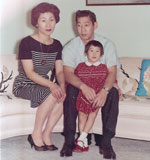

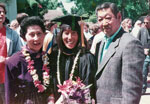





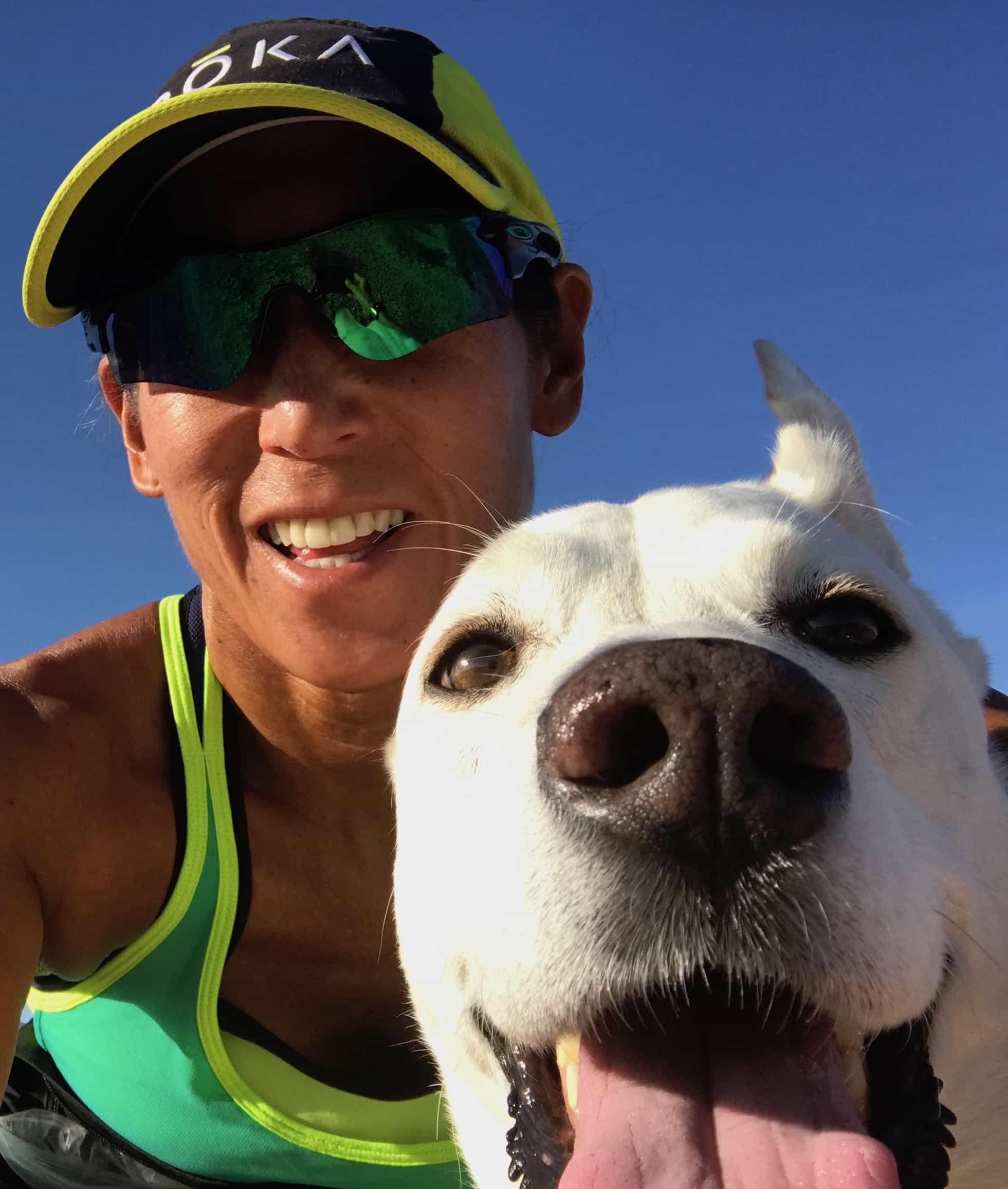 Michele K. Nishiguchi, PhD
Michele K. Nishiguchi, PhD